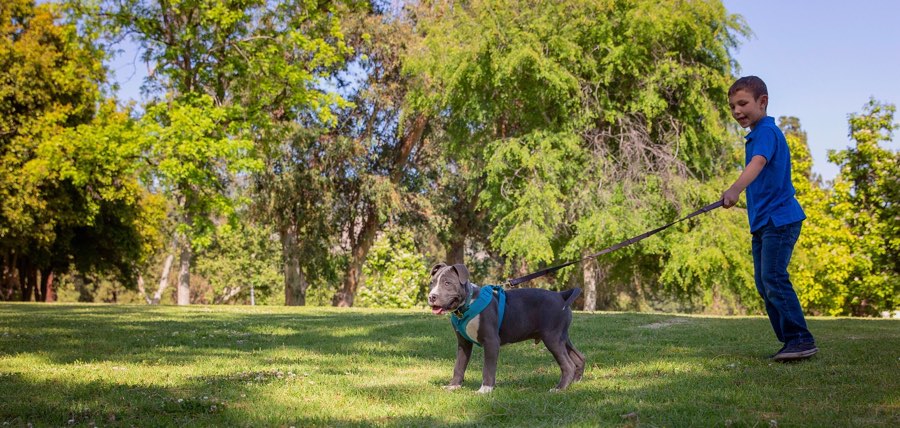What Length Should I Choose for My Dog's Leash?

All dog leashes have the same basic purpose, that is, to keep your pup safe and under your control while out in public and as an aid during dog training. The dog’s age size, temperament, level of training, and the situation, will determine the best leash length to use.
Safety first means never having so much slack in your leash that it drags on the ground where it can get tangled around you and/or your dog. A tall human with a small dog should use a different leash length than a shorter human with a tall dog. As younger dogs learn more, and situations change, the optimal leash length will also likely change.
For Training and Everyday Walking: 3', 4’, 5’ or 6’ leash
Shorter 3’-4’ leashes are recommended for younger puppies, for dogs that are new to you, for puppies or dogs in training or for times the situation dictates it is safer to have your pup close by, such as greeting other dogs and people or unexpected distractions like a squirrel or skateboarder.
Shorter leashes are also recommended for dogs working on pulling or jumping up. For overall control, 4 feet is a good length for most dogs and puppies. It’s perfect when teaching your new puppy (or dog) to stay by your side, and it's always recommended for any dog who needs a little more guidance.
A 3’ leash will offer the same control for a taller dog. This is the perfect length for walking in neighborhoods, parks, city streets, or other more trafficked areas (farmer’s market, shopping centers, outdoor dining).
As your puppy or dog learns leash manners, you can still maintain control with a 5 feet or 6 feet length. This gives your pup a bit more room to potty and explore, yet remain within your control. If your pup is pulling, jumping up, lunging at passing dogs continue to work with them on the shorter length leash. The increased length, and decreased control, will not improve these poor leash manners. For the well behaved pup, this is the perfect length for walking in neighborhoods, parks and other less trafficked areas such as hiking.
A 5’ leash, with stops sewn into the leash offers flexibility in the length. The stops provide an easy way to securely hold the leash at different positions, shortening the leash available to pup and improving control. These leashes work well for larger breed puppies that are growing quickly; you can adjust as they grow.
Crowded City Streets
Traffic leads keep taller dogs close and safe, especially under high traffic conditions or in crowded places. Our Urban Walker is 12" long and has a short hand loop which makes it easier to keep your best friend by your side.
Indoor Training/Dog Park/Dog Beach
GrabTabs are super short leads, 8" or 12", that give you something to grab quickly when your dog is off leash. They are short enough and do not include a looped handle, so they won't drag through mud and debris as your dog runs around. They are also very useful for training puppies and new dogs inside your home. If your dog gets over excited when people come to visit, leave your GrabTab on for quick access.
Leash Width
In addition to length, it's important to consider the width of the leash. Small-medium dog leashes have a narrower 5/8" width and a lighter weight clip. These are also a comfortable option for larger dogs that are very well trained on a leash. For larger breeds that are still learning their leash manners, a 3/4" width with a stronger clip is recommended.
Why We Don't Recommend Retractable Leashes
As we've said, keeping your pup safe is the primary purpose of a leash. The shorter the leash, the more control you have. The more control you have, the safer it is for both you and your pup.
- Retractable leads “reward” your dog for pulling. Feeling the tension on the line as they get to explore new and exciting smells tells them I pulled to get over to here and was rewarded by getting to check out this new thing I wanted to.
- Retractable leashes offer little control. There is no easy or quick way to retract the leash short of grabbing the cord and pulling on it, which may cause injury to your hands.
- You also risk injury to your dog’s neck or spine when you push on the lock to stop your dog from pulling ahead of you. It exerts a strong force where the leash is attached to your pup (likely at the collar).
Question? Bark at Us
If you have any questions about choosing the right leash for your dog, we're leash experts and always happy to help





